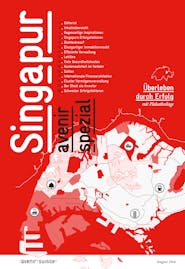Singapore’s founding father, Lee Yuan Kew, declared that Singapore should aim to emulate Switzerland after attending a meeting of the Socialist International there in 1967. Now, almost 50 years later, Singapore has caught up with or even overtaken Switzerland in many ways. While Switzerland still serves as a role model for Singapore in many respects, there are now some aspects about the Asian state that could give Switzerland cause for envy. This is what prompted the two economic policy think tanks Avenir Suisse and the Institute for Policy Studies (IPS) to organise joint seminars – one in Singapore and one in Switzerland – under the heading “Learning from each other”.
Singapore is interested, for example, in Switzerland’s dual education system and research policy, which has made it one of the most innovative countries in the world. Meanwhile, Switzerland is keen to find out more about Singapore’s experiences with mobility pricing and its home ownership policy. There are also some challenges – the problems of an ageing society or immigration, for instance – which both countries face, but have so far dealt with in completely different ways.
Although the two countries are united by many similarities – population size, a scarcity of raw materials, prosperity, the importance of the financial sector and being surrounded by larger states, for example – their approaches to these issues are often significantly different (see also poster enclosed). This provides an ideal basis for learning from one another.
There is one major distinction, however: Singapore’s political system is structured from the top down, whereas Switzerland’s is organised from the bottom up. There is a deep divide between the paternalism of the Asian city state and the democracy of the Swiss Confederation. Singapore is run like a business, its civil servants receive a similar level of pay to corporate managers and the speed of implementation is often breathtaking. This may be a far cry from the world’s oldest democracy, but that is no reason not to take inspiration from these experiences. That is the aim of the articles in this publication: to encourage people to take a bold approach to thinking about Switzerland.






